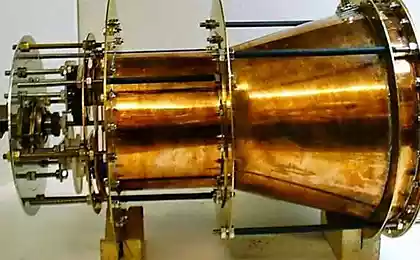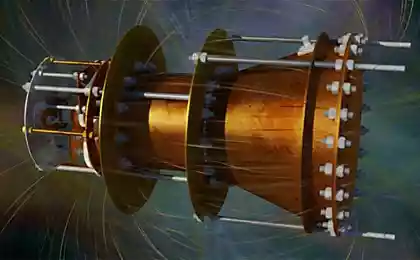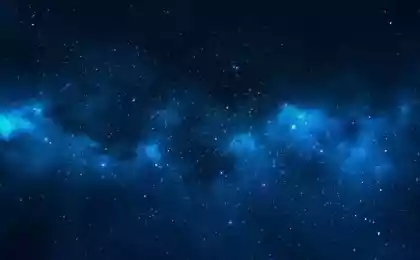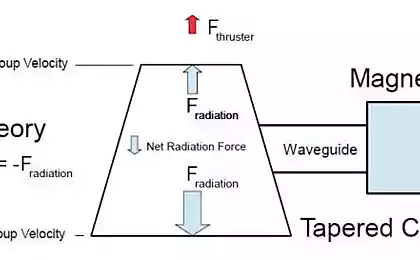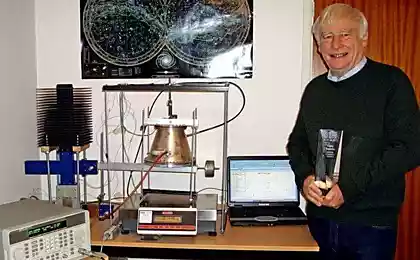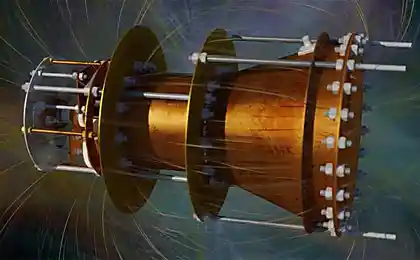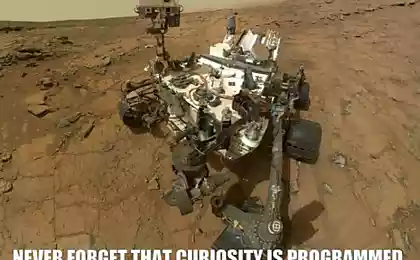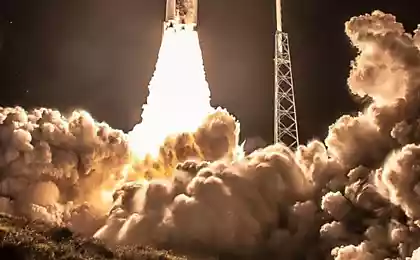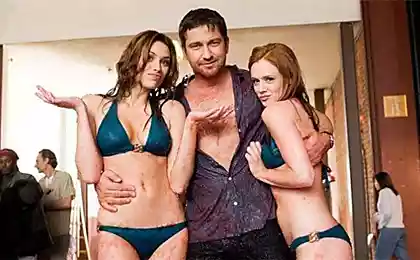470
The published report of NASA on the successful testing EmDrive
Scientists and engineers in 2001, continues to argue about the possibility of the existence of electromagnetic EmDrive engine which generates thrust in a closed loop, no exhaust. This engine seems to be breaking the law of conservation of momentum. On the other hand, but dozens of tests to show de facto that it is working contrary to Newtonian physics. According to scientific principles, it is impossible to recognize a healthy engine, if there is no generally accepted explanation of his work. Therefore, the experiments continue.
With the strange engine experiment not only enthusiasts. The trials are taking place at NASA. Working on a strange principle, the engine produces thrust even in a vacuum, which excludes thermal convection.
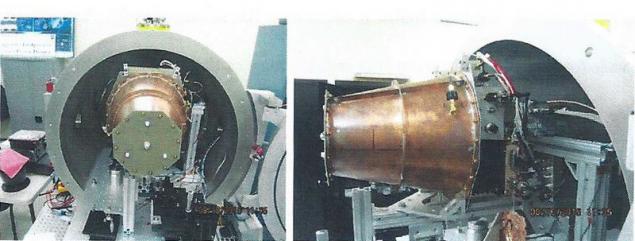
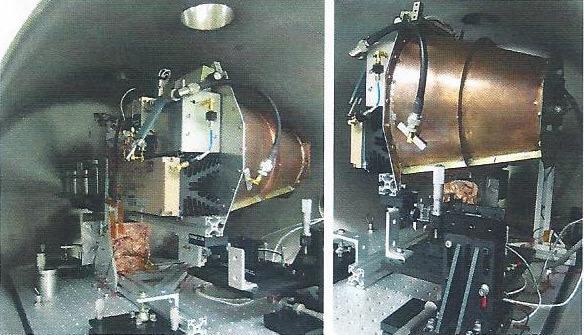
EmDrive test unit in the laboratory Space center. Lyndon Johnson
According to the principle of EmDrive, the magnetron generates microwaves, the energy of oscillation stored in the high q resonator, and the existence of standing wave of electromagnetic oscillations in a closed cavity of a special form is the source of thrust. The physical principle of operation is not entirely clear.
Meanwhile, now the Network got the official NASA report on the test engine. The authors of the report — the staff of the Space center. Lyndon B. Johnson. It is the center of NASA for the development of manned spacecraft near Houston.
Two months ago on the NASA Spaceflight forum mentioned this scientific work titled "Measuring the pulsed thrust of a closed radio-frequency cavity in a vacuum." There were rumors that she was an independent examination and will be published soon in the American Institute of Aeronautics and Astronautics (AIAA). The authors stated Harold white, Paul March, James Lawrence, Jerry Vera, Andre Sylvester, David Brady and Paul Bailey [Harold White, Paul March, James Lawrence, Jerry Vera, Andre Sylvester, David Brady, Paul Bailey]. All employees of the Space center. Lyndon B. Johnson.
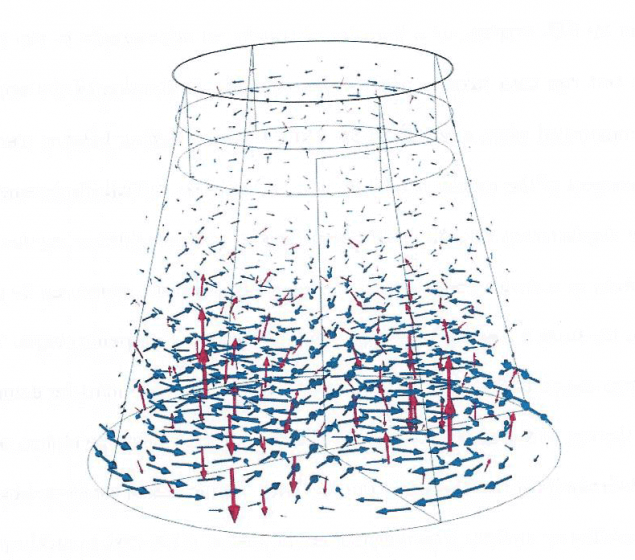
The lines of force cross the magnetic flux (Transverse Magnetic Mode 212) in a cavity filled with dielectric. The red lines represent the electric field, blue lines — magnetic field. Illustration from the scientific article "Measuring the pulsed thrust of a closed radio-frequency cavity in a vacuum"
The article stated that the EmDrive engine developed a thrust with a power factor of 1.2 to±0.1 mn/kW.

The engine really works, and with such a thirst he could really find a use in space exploration. Compare the result EmDrive with engines of other types. For example, the best engine on the Hall effect produces up to 60 mn/kW, which is about 50 times more than the EmDrive. On the other hand, solar sails and photon engines — the same power plant without fuel — generating thrust is two orders of magnitude lower than the EmDrive (3,37−of micronewtons of 6.67 per kilowatt).
NASA to test engine in a laboratory environment was constructed in the test facility on the basis of the torsion pendulum.

A simplified diagram of the test set based on the torsion pendulum

Block diagram of test setup
A published report by NASA shows that laboratory testing EmDrive completed — and the engine proved its efficiency. The next step should be testing in space.
A spacecraft with an engine of this type can be send on the big distance — it will be even more convincing proof of the work of the EmDrive.
Before the actual operation of EmDrive engineers have to work to improve the efficiency and traction of this engine. According to the calculations enthusiasts, if you increase the capacity of the power plant EmDrive and provide it with fuel cells with hydrogen and oxygen, such an engine on the ISS will reduce the number of truck missions with fuel to the station, reduce the number of acceleration maneuvers for the ISS, which will reduce the load on the supporting structure of the station and extend its service life.
For a conventional geostationary satellite, the replacement of conventional engine and fuel the transition to EmDrive means a reduction of weight from 3 tons to 1.3 tons.
And the most interesting. According to NASA engineer Paul March (Paul March), the spacecraft technology EmDrive can exceed technical characteristics of a conceptual vehicle with the first version of warp WarpStar-1 on the ship, the IXS Enterprise (IXS-110) from the Star Trek universe.
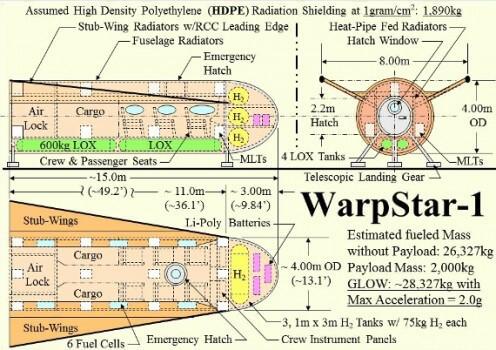
Technical characteristics of the WarpStar-1
With this conceptual historical engine began using warp technology and the development of mankind of distant space.
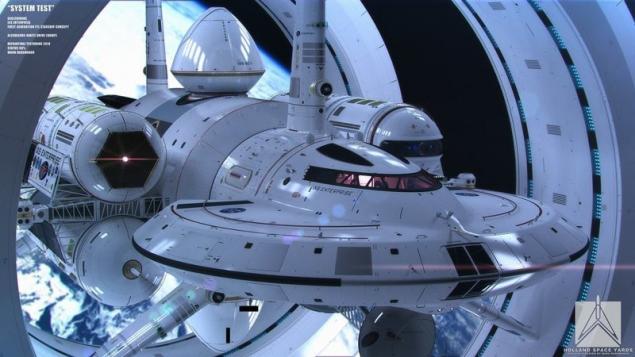
IXS Enterprise (IXS-110) takes off from the docks
According to estimates of NASA engineer, a ship with EmDrive is able to deliver six passengers and Luggage from the earth to the moon, and then back to four-hour interval. Engineers believe that the improvement of power install the EmDrive nuclear fuel would reduce the flight time to Mars to 70 days. published
Source: geektimes.ru/post/282304/
With the strange engine experiment not only enthusiasts. The trials are taking place at NASA. Working on a strange principle, the engine produces thrust even in a vacuum, which excludes thermal convection.


EmDrive test unit in the laboratory Space center. Lyndon Johnson
According to the principle of EmDrive, the magnetron generates microwaves, the energy of oscillation stored in the high q resonator, and the existence of standing wave of electromagnetic oscillations in a closed cavity of a special form is the source of thrust. The physical principle of operation is not entirely clear.
Meanwhile, now the Network got the official NASA report on the test engine. The authors of the report — the staff of the Space center. Lyndon B. Johnson. It is the center of NASA for the development of manned spacecraft near Houston.
Two months ago on the NASA Spaceflight forum mentioned this scientific work titled "Measuring the pulsed thrust of a closed radio-frequency cavity in a vacuum." There were rumors that she was an independent examination and will be published soon in the American Institute of Aeronautics and Astronautics (AIAA). The authors stated Harold white, Paul March, James Lawrence, Jerry Vera, Andre Sylvester, David Brady and Paul Bailey [Harold White, Paul March, James Lawrence, Jerry Vera, Andre Sylvester, David Brady, Paul Bailey]. All employees of the Space center. Lyndon B. Johnson.

The lines of force cross the magnetic flux (Transverse Magnetic Mode 212) in a cavity filled with dielectric. The red lines represent the electric field, blue lines — magnetic field. Illustration from the scientific article "Measuring the pulsed thrust of a closed radio-frequency cavity in a vacuum"
The article stated that the EmDrive engine developed a thrust with a power factor of 1.2 to±0.1 mn/kW.

The engine really works, and with such a thirst he could really find a use in space exploration. Compare the result EmDrive with engines of other types. For example, the best engine on the Hall effect produces up to 60 mn/kW, which is about 50 times more than the EmDrive. On the other hand, solar sails and photon engines — the same power plant without fuel — generating thrust is two orders of magnitude lower than the EmDrive (3,37−of micronewtons of 6.67 per kilowatt).
NASA to test engine in a laboratory environment was constructed in the test facility on the basis of the torsion pendulum.

A simplified diagram of the test set based on the torsion pendulum

Block diagram of test setup
A published report by NASA shows that laboratory testing EmDrive completed — and the engine proved its efficiency. The next step should be testing in space.
A spacecraft with an engine of this type can be send on the big distance — it will be even more convincing proof of the work of the EmDrive.
Before the actual operation of EmDrive engineers have to work to improve the efficiency and traction of this engine. According to the calculations enthusiasts, if you increase the capacity of the power plant EmDrive and provide it with fuel cells with hydrogen and oxygen, such an engine on the ISS will reduce the number of truck missions with fuel to the station, reduce the number of acceleration maneuvers for the ISS, which will reduce the load on the supporting structure of the station and extend its service life.
For a conventional geostationary satellite, the replacement of conventional engine and fuel the transition to EmDrive means a reduction of weight from 3 tons to 1.3 tons.
And the most interesting. According to NASA engineer Paul March (Paul March), the spacecraft technology EmDrive can exceed technical characteristics of a conceptual vehicle with the first version of warp WarpStar-1 on the ship, the IXS Enterprise (IXS-110) from the Star Trek universe.

Technical characteristics of the WarpStar-1
With this conceptual historical engine began using warp technology and the development of mankind of distant space.

IXS Enterprise (IXS-110) takes off from the docks
According to estimates of NASA engineer, a ship with EmDrive is able to deliver six passengers and Luggage from the earth to the moon, and then back to four-hour interval. Engineers believe that the improvement of power install the EmDrive nuclear fuel would reduce the flight time to Mars to 70 days. published
Source: geektimes.ru/post/282304/
The use of the Supercharger stations for owners of Tesla electric cars will be paid
In the Netherlands there are roads from plastic
